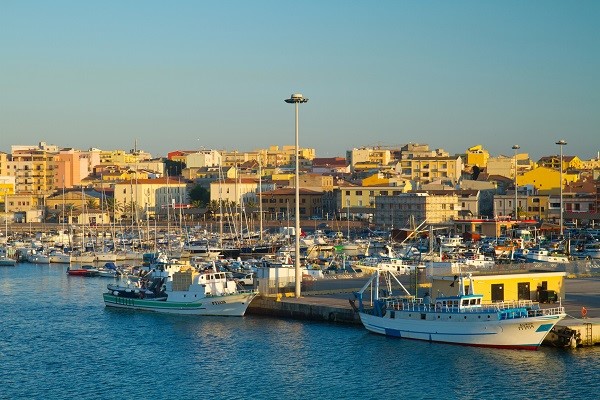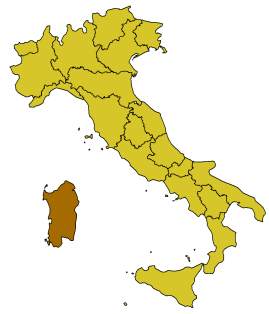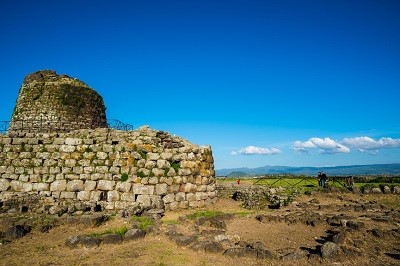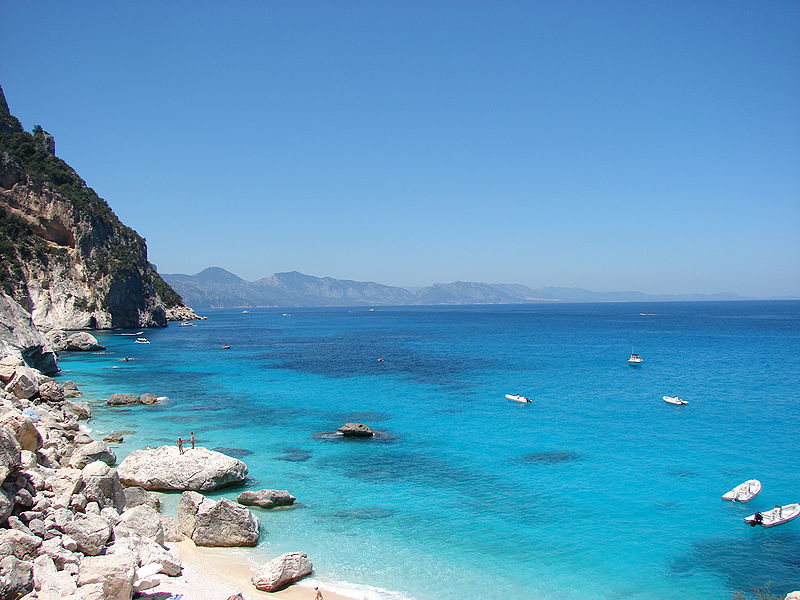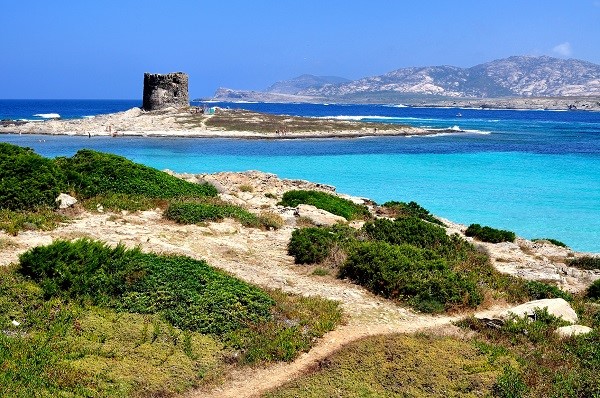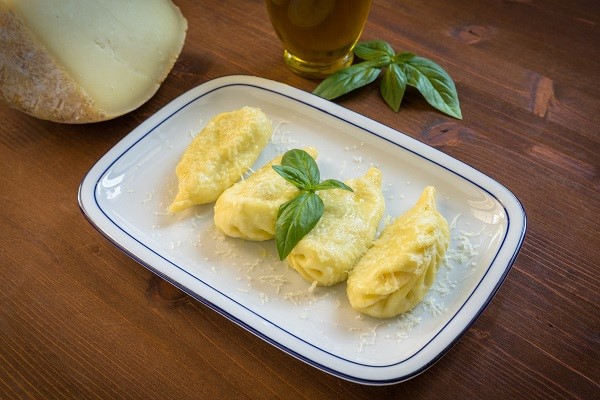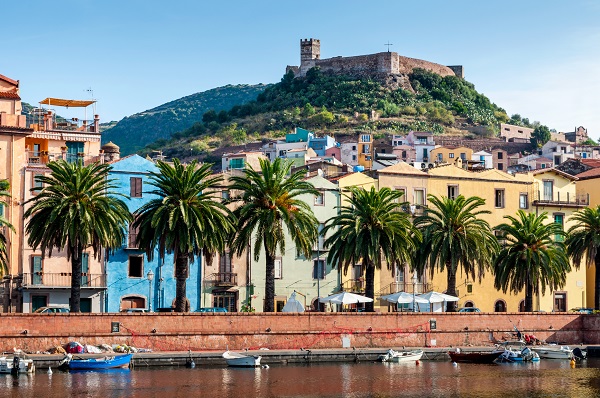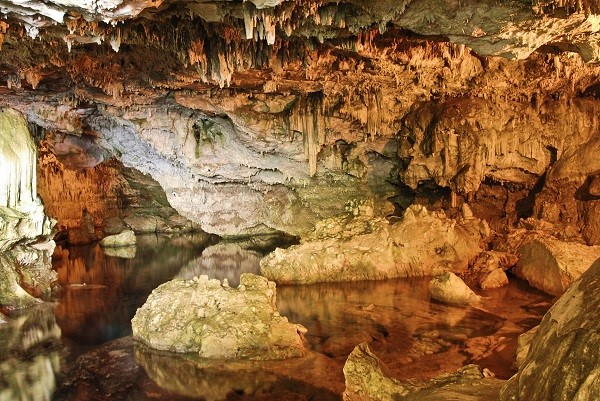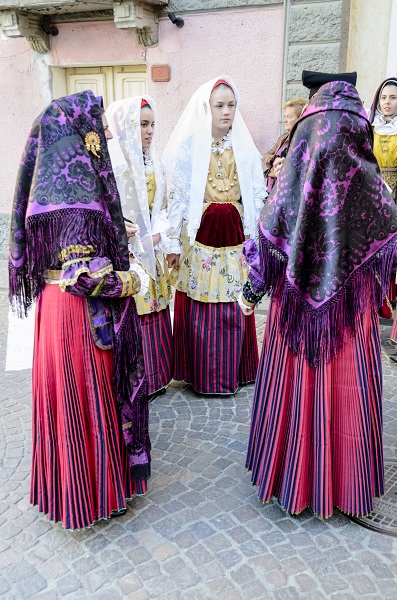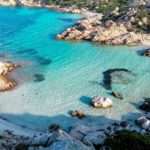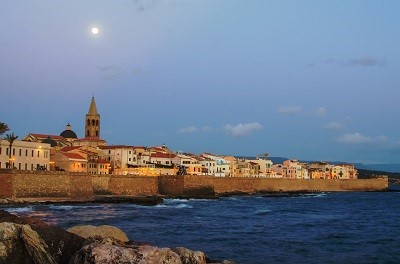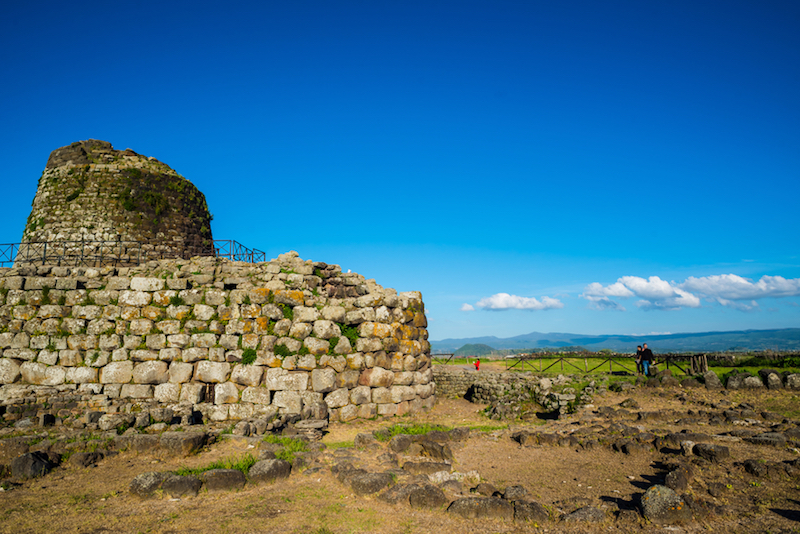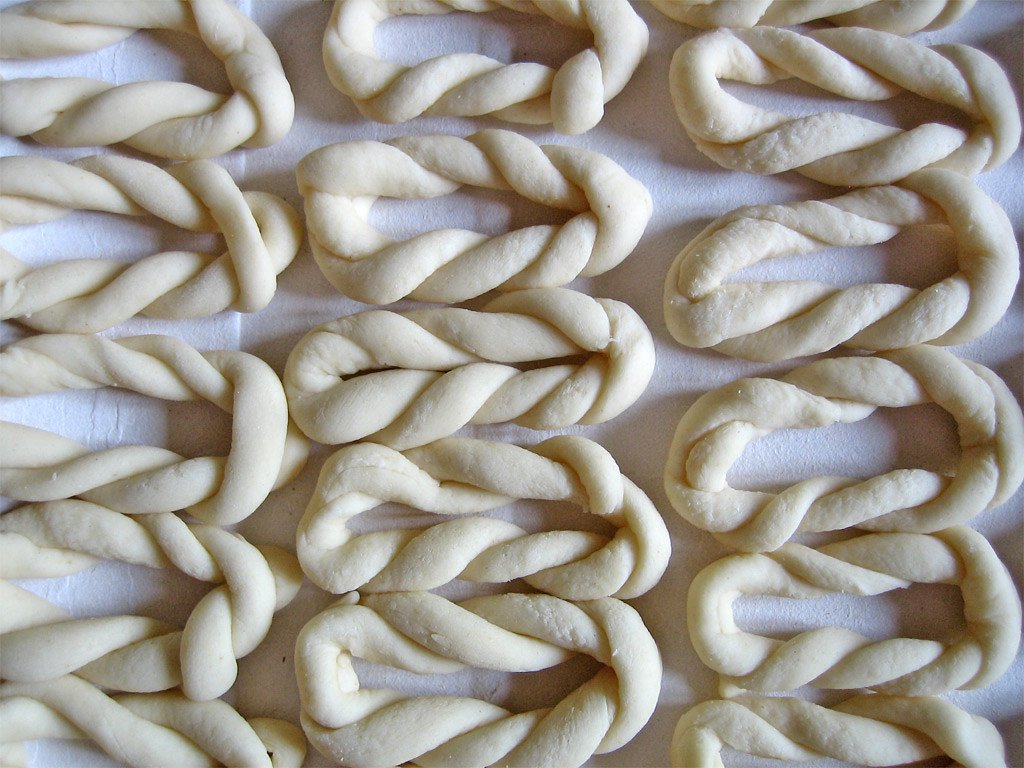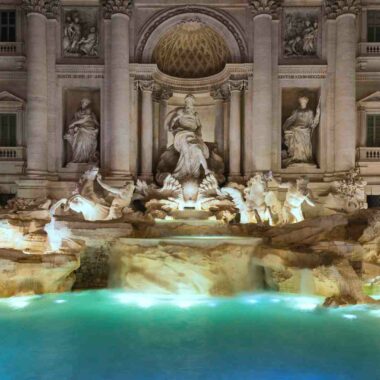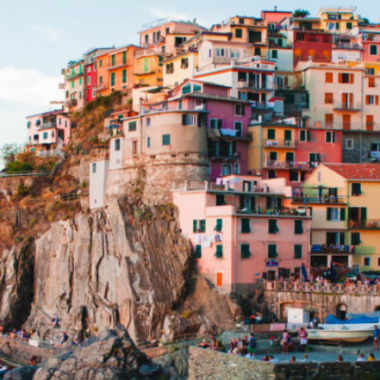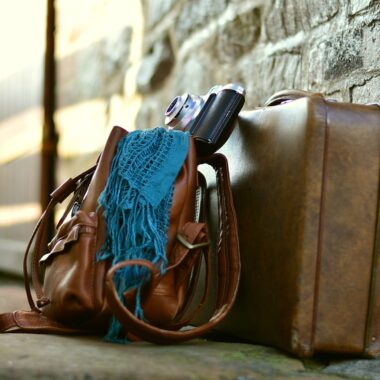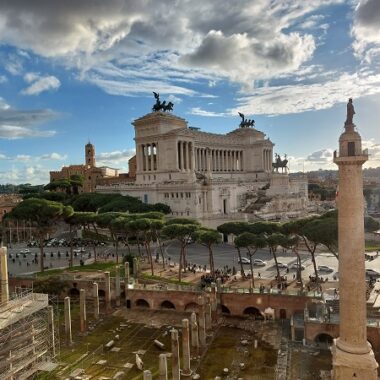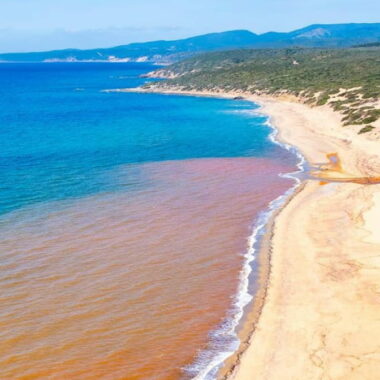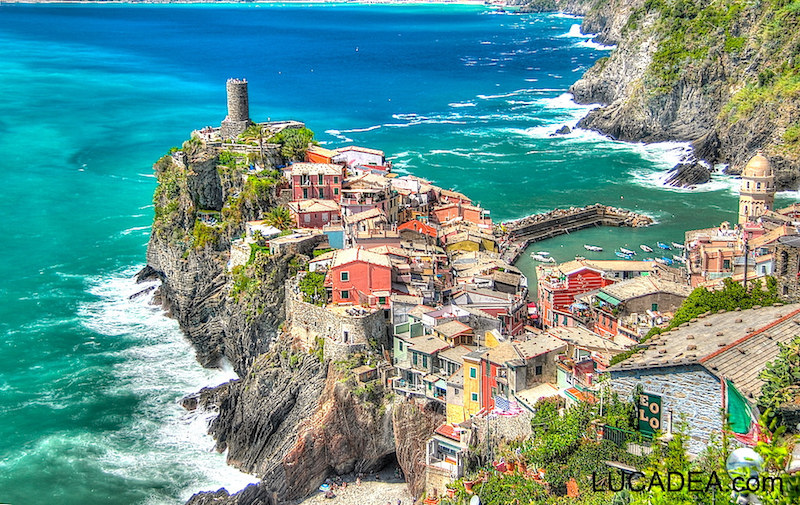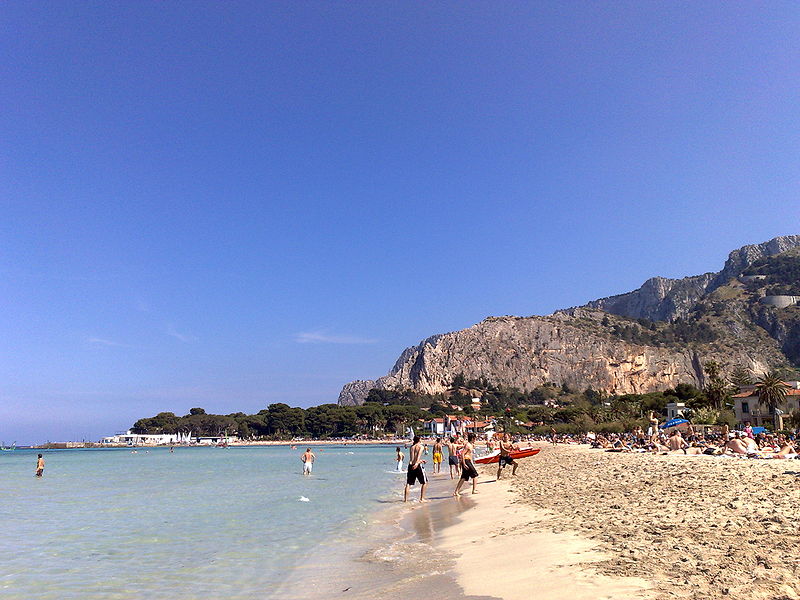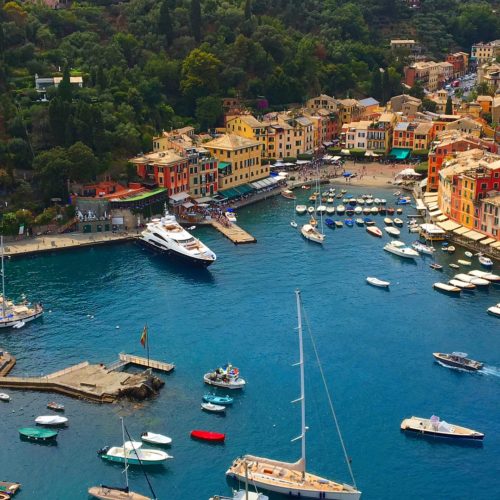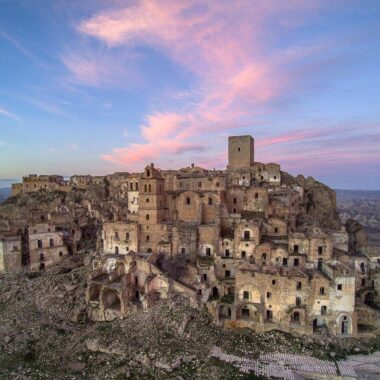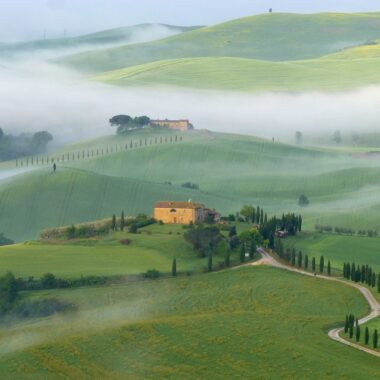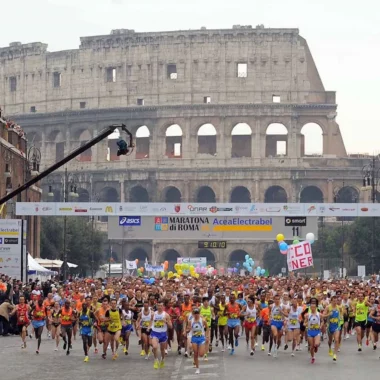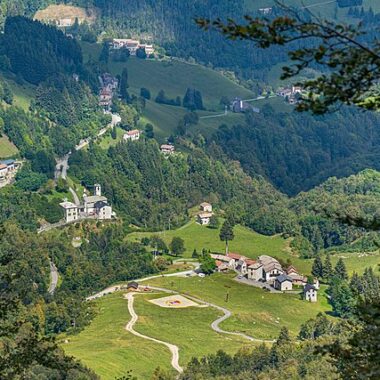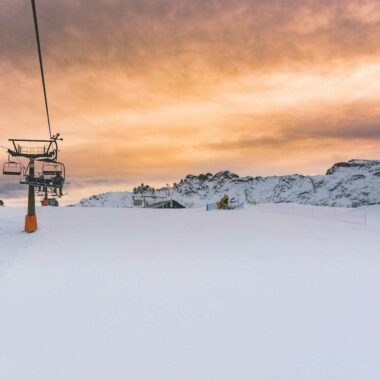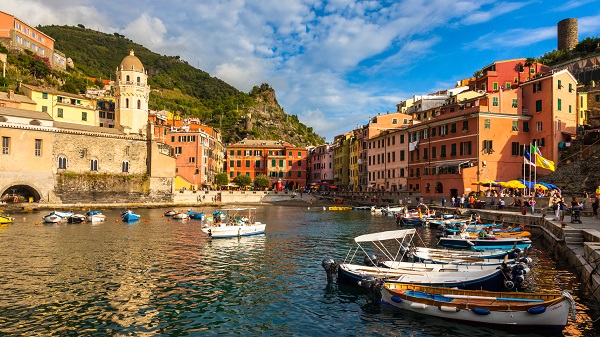Sardinia is the second-largest island in the Mediterranean, characterized by a jagged and rocky coastline, interspersed with marvelous beaches of very fine sand. The past fifty years have seen Sardinia become a hotspot for tourism, with the Costa Smeralda (Emerald Coast) in the northern area becoming a favorite retreat of Italian celebrities. There are numerous Bronze Age remains throughout the island, the best known being the Nuraghi – circular (sometimes conical) stone dwellings left by an otherwise unknown people.
The Sardinian coast may be dedicated to tourism, but the interior still belongs to native Sardinians, who still hold onto their customs, food and unique language (Sardinian is a direct descendant of classical Latin, just as Italian is, and is considered a true language and not a dialect). A trip along the shore makes a fantastic getaway, but exploring away from the beaches in Sardinia will give the traveler a glimpse of real Sardinia.
Sardinia: History
The history of Sardinia is long and with mysterious beginnings. The first settlers were the enigmatic Nurag people, during the Bronze Age, known for their beehive live structures that can still be seen throughout the island. Not much is known about the Nurag, except that they did achieve a level of sophistication that included sea trade. Both the Nurag lands and the Greek colonies of Sardinia’s coast were annexed by Carthage in 537 BC: this started Sardinians’ habit to surrender coastal areas to enemies without putting up too much of a fight, in order to keep dominion onto the internal, mountain areas of the island. After the Punic Wars, Rome took over Sardinia and left their mark before invading Vandals and Byzantines attempted to rule the island.
In this power vacuum, Sardinia became semi-autonomous, with the island divided among Giudicati (kingdoms), all the while the ever present threat of Moorish pirates loomed on the horizon. With the help of the maritime powerhouses Genoa and Pisa, Sardinia remained free of the Moors, but the Genoese and Pisans quickly took over instead, and transformed Sardinia into a colonial holding. In 1297 Pope Boniface VIII created the Kingdom of Sardinia and Corsica for James of Aragon, which led to over one hundred years of war before Sardinia eventually capitulated and became part of the new Kingdom of Spain in 1493. Spanish rule of Sardinia ended after the War for the Spanish Succession, with a new Kingdom of Sicily and Sardinia given to the house of Savoy as part of the Congress of London in 1718. This new kingdom (later called the Kingdom of Piedmont-Sardinia) was part of the central holding of the House of Savoy, later to become part of the new Kingdom of Italy in 1861. In 1948 Sardinia became an autonomous region. Two years later malaria was completely wiped out, setting the stage for the popular tourist destination Sardinia has become today.
Sardinia: Regional Food and Wine
The traditional cuisine of Sardinia is, in some ways, a contradiction: an island civilization who does not use seafood. In truth, this peculiarity finds its explenation in the history of Sardinia itself. As we mentioned, the coastal areas of Sardinia used to be prone to invasions, and Sardinians soon decided to leave seaside areas to find refuge and stability in the mountainous hinterland of the island. Therefore, traditional foods of Sardinia were always more influenced by the land than the sea. Today much has changed and now seafood has been embraced by Sardinians, creating a truly unique gastronomic experience. Spicy fish soups called Burrida and Cassola, along with lobsters, crabs, anchovies, squid, clams and fresh sardines are all very popular dishes and ingredients along the Sardinian coast.
Favorite Sardinian dishes include spaghetti con Bottarga, with dried gray mullet roe shaved on top, or Malloreddus, a type of gnocchi flavored with saffron and served with tomato sauce. Culurgiones are round ravioli stuffed with spinach and cheese.
Sardinia is also known for its rustic sheep and goat cheeses like Pecorino Sardo and Fiore Sardo, which can either be served fresh or aged. The interior areas of the island produce some of the best lamb in the whole of Italy, known for being very lean. Sardinians enjoy their meats roasted and Porceddu, (Sardinian version of Porchetta) suckling pig or kid (suckling goat), roasted outdoors over aromatic woods is a favorite.
Sardinian wines have been influenced by the successive waves of invaders in the island, with the Spanish leaving the most indelible mark. The full-bodied red Cannonau is the wine of choice when serving Sardinia’s excellent lamb. The Spanish-imported Monica di Cagliari (DOC) can be found in dry, well-aged varieties as well as a sweet dessert wine known as Liquoroso Dolce. The best known Sardinian white is Vernaccia di Oristano (DOC), a golden dry wine that that is popular with fish and Sardinian lobster. The well balanced Vermentino di Gallura (DOCG) is the perfect accompaniment to the seafood of the Costa Smeralda. Spirits include the aperitivo Liquoroso Secco (made from the Monica grape), and the myrtle flavored digestivo Mirto. There are also various types of Grappa and Fil’e Ferru, a Sardinian Aquavitae, and infusions of citrus fruits such as Limoncino and Arangiu.
Sardinia: Regional Highlights
Cagliari
Situated among salt marshes and fish-rich ponds at the center of the broad, southern gulf that extends from Cape Spartivento to Cape Carbonara, Cagliari is Sardinia’s main harbor and one of its gateways. The French author Auguste Bouillier, who visited it in 1864, wrote movingly of the view, with “cupolas glittering in the setting sun”, the “castle with its belt of grey walls”, and “spectral towers”. Dotted with Pisan towers and a Spanish castle, Cagliari has other Spanish touches, such as its flower-lined patios, decorated with ceramics not unlike Portugal’s famed azulejos. Travelers interested in Sardinia’s mysterious past should visit the Museo Nazionale Archeologico, which houses an unequalled collection of ancient Sardinian, Phoenician, Minoan and Roman artifacts.
Costa Smeralda
La Costa Smeralda, or “the Emerald Coast,” is a relatively new feature of Sardinia, created about forty years ago to transform a formerly wild and isolated coastal area into a world-class tourist destination. La Costa Smeralda occupies the northeast corner of Sardinia, from Olbia to Santa Teresa Gallura, and follows the dramatic lines created by inlets and gulfs. Besides the fashionable resorts with their trendy beaches and yachts, la Costa Smeralda also has unbelievable natural beauty, with some of the clearest waters in the entire Mediterranean. Away from the coast, the road travels into the ancient lands of the Nuraghi, with the ruins of their distinctive structures, as well as older prehistoric dolmens known as the Tombs of the Giants. Make sure you check the best luxury hotels in Sardinia for a perfect stay!
Alghero
Alghero was once a bastion of the Spanish Viceroy and even today is nicknamed “Barcelonetta” (little Barcelona) because of a variety of Catalan still spoken in the area. At the bottom of Via Umberto stands the sixteenth-century Cattedrale, where Spanish viceroys stopped to take a preliminary oath before taking office in Cagliari. A walk around the old town should take in the series of seven defensive towers which dominate Alghero’s center and its surrounding walls. Outside the old quarter, most of the tourist activity takes place around the port, its wide quay nudged by rows of colorful fishing boats and bordered by bars. Short trips outside Alghero lead to the impressive ruins of the Palmavera Nurag, as well the excellent beaches of Porto Conte.
Sardinia: Regional Festivals
Cagliari – Festival of San Efisio in May
Oristano – Sartiglia Joust in February
Nurachi Tempio – Feast of Santa Lucia in December
Aritzo – Chestnut Festival in October
Gesico – Snail Festival in October
Alghero – Fishermen’s Festival in September
For Further Information
Official Regional Web Site: www.regione.sardegna.it
Official Cagliari Web Site: www.comune.cagliari.it
By Justin Demetri

